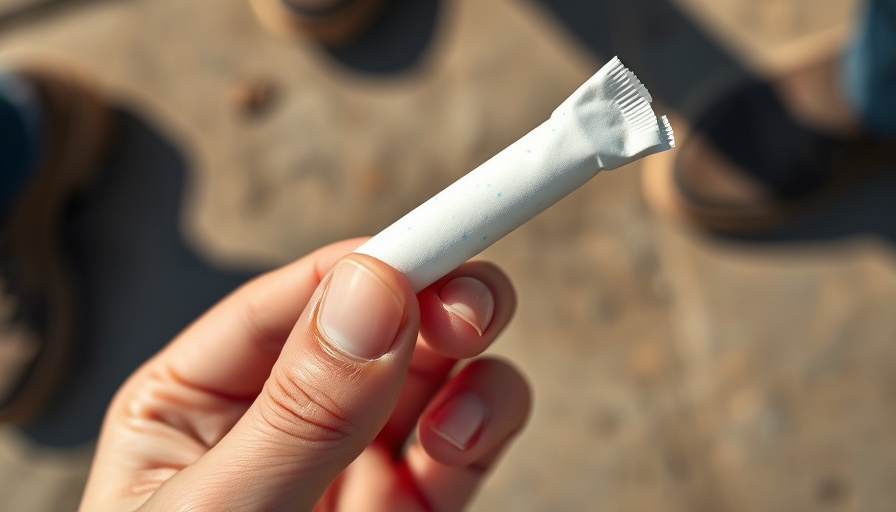
Microplastics Unwrapped: What Chewing Gum Reveals About Our Daily Lives
Recent studies have unearthed a startling reality: the chewing gum many enjoy as a simple pleasure is potentially releasing thousands of microplastics into our mouths. This revelation is not just a surprising nugget of information; it's a wake-up call about the hidden dangers lurking in everyday products. Understanding how this affects our health and environment is essential for consumers who strive to lead healthier, sustainable lives.
The Hidden Cost of Chewing Gum: A Closer Look at Ingredients
Chewing gum is often marketed as a guilt-free snack—something that freshens breath and keeps cravings at bay. However, many people are unaware that some gums contain synthetic rubber or plastics used as stabilizers and sweeteners. This means that every time we chew, we might be unknowingly ingesting microplastics. According to the recent study, the act of chewing can cause these tiny particles to release, raising concerns about the long-term implications of repetitive consumption.
Environmental Connections: The Ripple Effect of Microplastics
Microplastics are a pervasive issue beyond the confines of our chewing gum. They are found in oceans, rivers, and even in the soil, impacting wildlife and ecosystems. The existence of such particles in our food products suggests a grim reality where our indulgences have unintended consequences on the environment. Understanding this ripple effect urges consumers to rethink their choices: while enjoying gum may seem harmless, the broader impact calls for a shift towards more sustainable alternatives.
Health Implications: Should We Be Concerned?
The health implications of ingesting microplastics are still being studied. As we often prioritize taste and convenience, we must also consider what these small particles might do over time, especially as they accumulate in our bodies. Early research suggests potential links to various health issues, ranging from digestive problems to hormonal disruptions. For individuals looking to maintain a healthy lifestyle, being informed about such risks is key to making smarter food choices.
Making Informed Choices: Alternatives for a Healthier Lifestyle
With the risks highlighted by new research, many may wonder how to indulge in their guilty pleasures responsibly. Here are a few alternatives to traditional chewing gum:
- Natural Gum: Look for brands that use plant-based ingredients instead of synthetic substances.
- Mints with Natural Ingredients: Opt for mints that provide freshness without the addition of microplastics.
- Homemade Options: For the crafty, consider making your own mint chews with natural ingredients to avoid processed additives.
Transitioning to these alternatives not only minimizes health risks but also supports sustainable practices, reducing our plastic footprint.
Engaging in the Conversation: Consumer Awareness Matters
The revelations surrounding microplastics in chewing gum highlight the need for consumers to raise their voices about product safety and transparency. Public pressure can encourage companies to reformulate their products and adopt environmentally-friendly practices. By supporting brands that prioritize consumer health and sustainability, every individual can contribute to a larger movement for safer products.
What This Means for the Future: Trends in Health and Wellness
As awareness of issues like microplastics grows, so does the demand for healthier, more sustainable options in our diets. This trend indicates a promising shift in consumer behavior—one that favors brands that prioritize safety and sustainability. As a result, manufacturers may be more inclined to innovate product lines that focus on delivering fun and enjoyment without compromising health or the environment.
Conclusion: Rethinking Chewing Gum
In light of these recent findings, it is crucial for consumers to reconsider their everyday choices, especially when it comes to products as seemingly innocuous as chewing gum. By staying informed and choosing wisely, we can protect both our health and the planet. Let's embrace a culture of sustainability by prioritizing our health and making choices that reflect our values in wellness and environmental responsibility.
 Add Row
Add Row  Add
Add 




Write A Comment